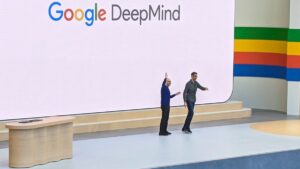Researchers at Google DeepMind Unveil New Benchmark to Enhance Factual Accuracy and Minimize Hallucinations in Language Models

Understanding Hallucinations in Large Language Models
The Challenge of Inaccuracy
Hallucinations, or factually incorrect outputs, continue to be a significant issue for Large Language Models (LLMs). These models often struggle when faced with complex tasks that require specific and detailed answers, leading to frustrating user experiences. This challenge has long been a concern for data scientists, prompting ongoing efforts to enhance the factual accuracy of these AI models.
Recent Advances by Google DeepMind
Researchers from Google DeepMind have recently made significant strides in tackling this issue through the introduction of a new benchmark called FACTS Grounding. This benchmark assesses the capacity of LLMs to produce factually accurate responses based on long-form documents. It goes beyond simple accuracy checks, also evaluating the relevance and detail of the answers provided.
The FACTS Grounding Benchmark
The FACTS Grounding benchmark is designed to fill existing gaps in evaluating LLM behavior concerning factual accuracy. It offers a broader perspective compared to previous benchmarks that often focused on specific use cases, such as text summarization. To facilitate a better understanding of model performance, the researchers have also rolled out a FACTS leaderboard hosted on Kaggle, allowing data scientists to track these advancements.
As of now, Gemini 2.0 Flash leads this leaderboard with a factuality score of 83.6%. Other models in the top rankings include Google’s Gemini 1.0 Flash and 1.5 Pro, Anthropic’s Clade 3.5 Sonnet and Claude 3.5 Haiku, along with OpenAI’s various GPT-4o versions, all scoring above 61.7% for accuracy.
Addressing Inaccurate Responses
Achieving factual accuracy in LLM outputs is complex, influenced by both the modeling (architecture, training, and inference) and the measuring (evaluation methodologies, data, and metrics) processes. The traditional approach of pre-training models primarily focuses on predicting the next word based on prior words. While this method can impart general world knowledge, it does not directly optimize for factual accuracy, often leading to the generation of text that sounds plausible but lacks grounding in reality.
Features of the FACTS Dataset
To enhance the factual grounding of responses, the FACTS dataset comprises 1,719 examples—split between 860 public and 859 private examples. Each example requires LLMs to generate long-form responses based on detailed contextual documents. The components of each example include:
- System Prompt: General instructions directing the model to base its answer strictly on the provided context.
- Task Request: A specific question that needs to be answered.
- Context Document: A long document containing the necessary information.
For a response to be deemed ‘accurate,’ the model must process the context effectively and produce a relevant, detailed answer. Responses that lack support from the document or do not meet the user’s needs are classified as ‘inaccurate.’
Examples of Accuracy in Responses
For instance, if a user inquires about why a company’s revenue decreased in the third quarter and provides a detailed financial report, merely stating that "the company faced challenges" would be inaccurate. This response fails to address detailed reasons that should have been unpacked from the report.
Conversely, a user asking for financial tips while providing a list of suggestions should receive a response detailing accurate advice, such as, "Utilize campus activities, purchase bulk items, and cook meals at home."
Judging Responses with LLMs
To allow for comprehensive evaluation, the researchers have included documents of varying lengths—up to 32,000 tokens, equivalent to approximately 20,000 words—covering various fields such as finance, technology, retail, medicine, and law. User requests also vary widely, often involving Q&A, summarization, and reinterpretation tasks.
Responses undergo a two-phase evaluation process. First, they are assessed for their relevance to the user’s question. Next, they must be free from inaccuracies and grounded in the provided documents. Factuality scores are determined by three different LLM judges—specifically, Gemini 1.5 Pro, GPT-4o, and Claude 3.5 Sonnet—whose individual evaluations contribute to an average score.
The Importance of Diverse Evaluation
Researchers recognize that models can show bias toward others in their family, which may skew the results. Therefore, using a combination of different judges is crucial in ensuring more accurate, factually grounded responses. This emphasis on factuality and grounding is essential for the future success and dependability of LLMs. The researchers underscore that while the FACTS Grounding benchmark and leaderboard signify a pivotal advancement, ongoing research and refinement will be necessary to maintain progress.






